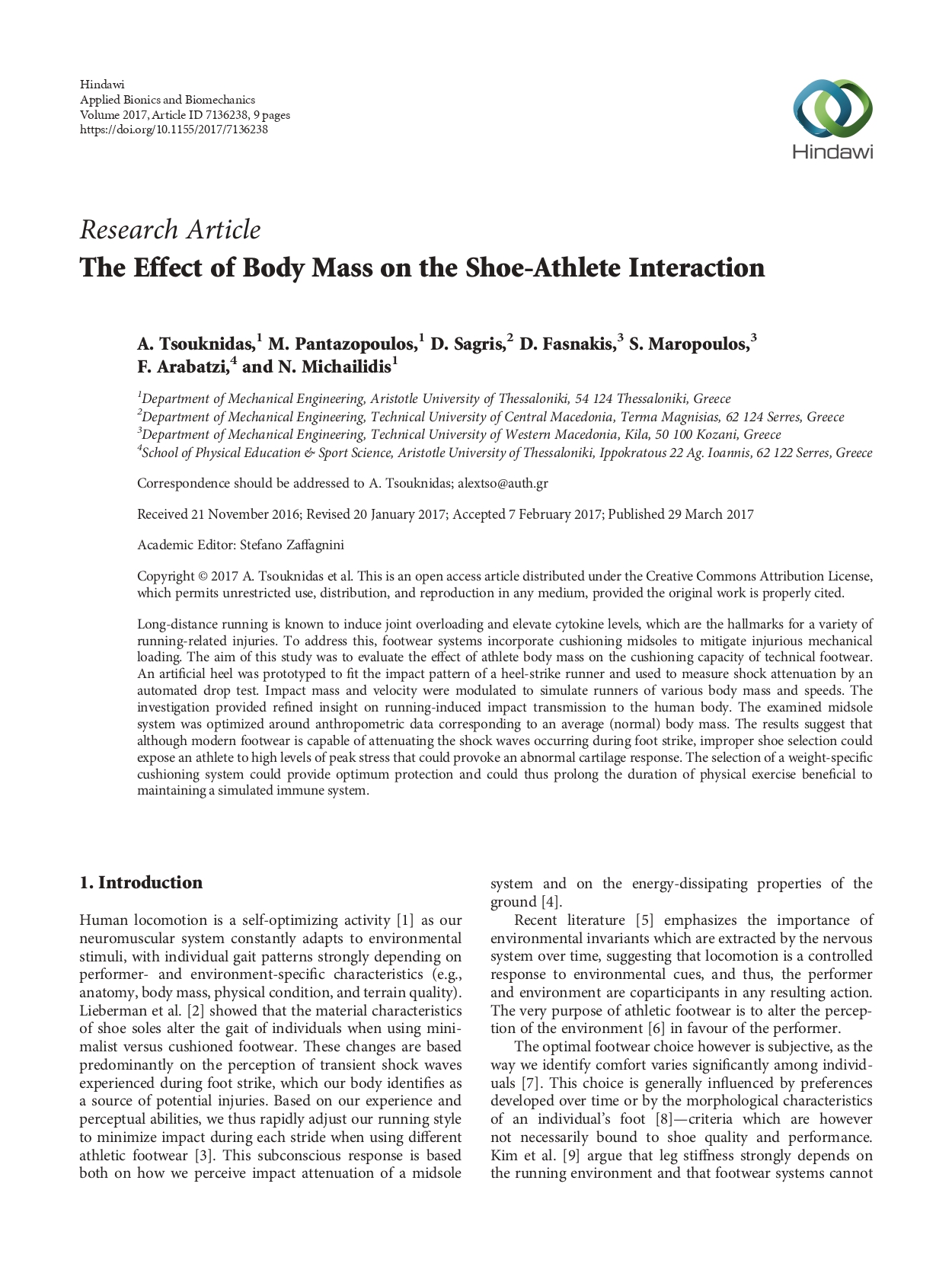Τitle
The Effect of Body Mass on the Shoe-Athlete Interaction
The Effect of Body Mass on the Shoe-Athlete Interaction
Applied Bionics and Biomechanics, 2017, art. no. 7136238.
Long-distance running is known to induce joint overloading and elevate cytokine levels, which are the hallmarks for a variety of running-related injuries. To address this, footwear systems incorporate cushioning midsoles to mitigate injurious mechanical loading. The aim of this study was to evaluate the effect of athlete body mass on the cushioning capacity of technical footwear. An artificial heel was prototyped to fit the impact pattern of a heel-strike runner and used to measure shock attenuation by an automated drop test. Impact mass and velocity were modulated to simulate runners of various body mass and speeds. The investigation provided refined insight on running-induced impact transmission to the human body. The examined midsole system was optimized around anthropometric data corresponding to an average (normal) body mass. The results suggest that although modern footwear is capable of attenuating the shock waves occurring during foot strike, improper shoe selection could expose an athlete to high levels of peak stress that could provoke an abnormal cartilage response. The selection of a weight-specific cushioning system could provide optimum protection and could thus prolong the duration of physical exercise beneficial to maintaining a simulated immune system.
